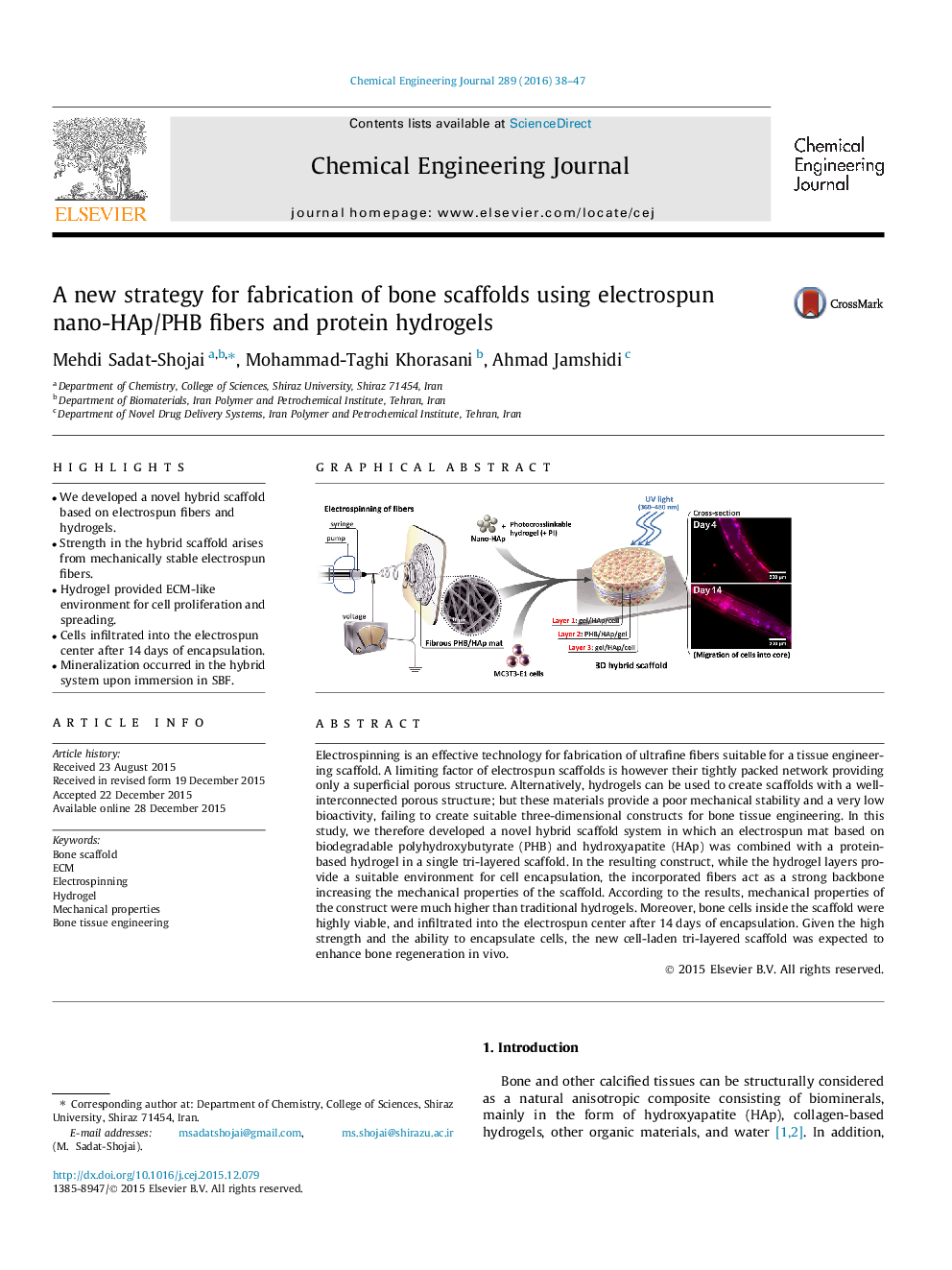| Article ID | Journal | Published Year | Pages | File Type |
|---|---|---|---|---|
| 145848 | Chemical Engineering Journal | 2016 | 10 Pages |
•We developed a novel hybrid scaffold based on electrospun fibers and hydrogels.•Strength in the hybrid scaffold arises from mechanically stable electrospun fibers.•Hydrogel provided ECM-like environment for cell proliferation and spreading.•Cells infiltrated into the electrospun center after 14 days of encapsulation.•Mineralization occurred in the hybrid system upon immersion in SBF.
Electrospinning is an effective technology for fabrication of ultrafine fibers suitable for a tissue engineering scaffold. A limiting factor of electrospun scaffolds is however their tightly packed network providing only a superficial porous structure. Alternatively, hydrogels can be used to create scaffolds with a well-interconnected porous structure; but these materials provide a poor mechanical stability and a very low bioactivity, failing to create suitable three-dimensional constructs for bone tissue engineering. In this study, we therefore developed a novel hybrid scaffold system in which an electrospun mat based on biodegradable polyhydroxybutyrate (PHB) and hydroxyapatite (HAp) was combined with a protein-based hydrogel in a single tri-layered scaffold. In the resulting construct, while the hydrogel layers provide a suitable environment for cell encapsulation, the incorporated fibers act as a strong backbone increasing the mechanical properties of the scaffold. According to the results, mechanical properties of the construct were much higher than traditional hydrogels. Moreover, bone cells inside the scaffold were highly viable, and infiltrated into the electrospun center after 14 days of encapsulation. Given the high strength and the ability to encapsulate cells, the new cell-laden tri-layered scaffold was expected to enhance bone regeneration in vivo.
Graphical abstractFigure optionsDownload full-size imageDownload as PowerPoint slide
